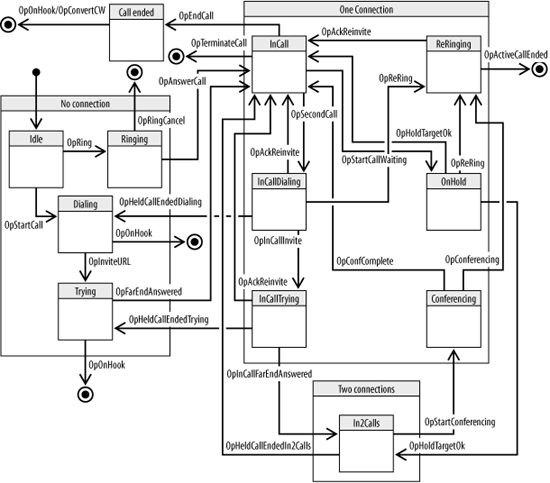Multicall Processing
Now, adding multicall processing to the state diagram makes it more complex, especially when you add all of the possible error conditions. To simplify the diagram in Figure 10-2, we removed all of the error states and left behind the states that are used for single calls and when the UA is handling two calls at once.

Figure 10-2. A complex state diagram
Let’s look at some of the states and operators that are shown in Figure 10-2.
States
Here is a list of the states shown in Figure 10-2 that enable processing two calls at once:
- Conferencing
Three users can actually talk to one another over an ad hoc session hosted by one of the User Agents. The conferencing state is shown as one connection because the UA and the two called parties are connected to the conference bridge. The UA does not support local conference mixing.
- In2Calls
The user who is setting up the ad hoc conference call has made connections with two called parties but has not yet conferenced them together onto the same session. One connection is on hold while the other is active. The ability to transfer and conference calls depends on the availability of a conference bridge and the parameter settings within the
ua.cfgfile. See the later "Conferencing" section.- InCallDialing
The calling party has put one called party on hold and is dialing the number for another called party.
- InCallTrying
The calling ...
Get Practical VoIP Using VOCAL now with the O’Reilly learning platform.
O’Reilly members experience books, live events, courses curated by job role, and more from O’Reilly and nearly 200 top publishers.

